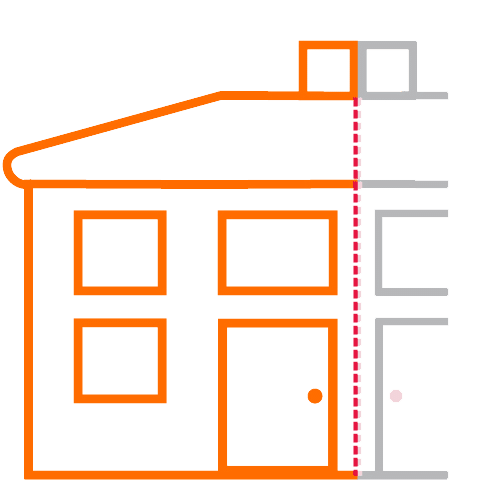Cost Considerations and Financial Assistance
When considering cavity wall insulation for your home in the UK, it is crucial to explore the various financial assistance options available to help offset the costs. The Great British Insulation Scheme offers grants and funding to qualifying households to make the process more affordable. By taking advantage of these opportunities, homeowners can improve their energy efficiency and reduce heating costs significantly.
The cost of cavity wall insulation can vary depending on the size of your property and the type of insulation you choose. However, with financial aid and grants from the government, the initial investment can be significantly reduced. It is essential to research and understand the available support to maximise the benefits of cavity wall insulation and create a more energy-efficient home in the long run.
Exploring funding options and grants available
There are various funding options and grants available to assist homeowners in qualifying for cavity wall insulation under the Great British Insulation Scheme. One of the primary avenues to explore is the Energy Company Obligation (ECO) scheme, which is designed to help those on low incomes or receiving certain benefits to improve the energy efficiency of their homes. Through ECO, eligible households may receive financial support towards the cost of cavity wall insulation installation, making it a more affordable option for many.
Additionally, some local authorities offer schemes that provide grants or subsidies for cavity wall insulation. These initiatives aim to encourage homeowners to make energy-efficient improvements to their properties, ultimately reducing overall energy consumption and carbon footprints. By researching and applying for these local grants, residents may benefit from financial assistance to cover a portion of the expenses associated with cavity wall insulation, contributing to a more sustainable and cost-effective home insulation solution.
Preparing Your Home for Insulation
Before the cavity wall insulation installation begins, it is essential to make sure that your home is prepped and ready for the process. Firstly, clear any clutter or obstacles around the walls that need insulating. This will allow the installers easy access to the exterior walls of your property. Additionally, make sure to inform the professionals of any particular areas of concern or issues they should be aware of, such as damp patches or leaks that may need to be addressed before the insulation can be installed.
Next, it is recommended to check for any existing damage to the walls that could affect the insulation process. Repairing cracks or holes before the installation will ensure a smooth and effective application of the cavity wall insulation. Moreover, ensure that any external pipework or cables are secure and won’t interfere with the insulation process. By taking these preparatory steps, you can help facilitate a successful cavity wall insulation installation that will improve the energy efficiency and comfort of your home.
Steps to take before the installation process
Before the installation of cavity wall insulation can commence, it is imperative to conduct a thorough assessment of your property. A professional surveyor will need to visit your home to determine if it is suitable for cavity wall insulation. During this survey, they will check the type of walls you have, their condition, and other factors that may affect the insulation process. It is essential to ensure that any existing issues such as damp or structural problems are addressed before proceeding with the installation.
Additionally, it is crucial to clear the areas where the insulation is to be installed. Move any obstacles, furniture, or personal belongings away from the walls to provide the installers with easy access. Make sure that the exterior walls are also easily accessible both inside and outside the property. Taking these steps beforehand will help streamline the installation process and ensure that it is carried out efficiently and effectively.
The Insulation Installation Process
The insulation installation process for cavity walls involves a series of structured steps to ensure effective results. Firstly, a professional installer will drill small holes into the outer walls of your property to access the cavity. These holes are strategically placed, ensuring minimal disruption to the overall aesthetics of your home. Once the holes are in place, the installer uses specialist equipment to blow insulation material into the cavity, filling the empty space between the walls. This process is efficient and typically takes a few hours to complete, depending on the size of your property.
After the insulation material is successfully injected into the walls, the installer will seal the holes using colour-matched mortar, leaving your property looking neat and tidy. It is essential to allow the mortar to dry adequately to prevent any potential issues with dampness or structural integrity. Once the installation is complete, your home will benefit from improved energy efficiency, reduced heat loss, and lower energy bills. Overall, the insulation installation process is a relatively straightforward and non-intrusive procedure that can significantly enhance the comfort and sustainability of your home.
What to expect during the installation of cavity wall insulation
During the installation of cavity wall insulation, the first step typically involves a team of trained professionals arriving at your property to begin the process. They will assess the exterior walls of your home to determine the most suitable method for inserting the insulation material. This evaluation is crucial to ensure that the insulation is applied correctly and efficiently.
Once the assessment is complete, the installation team will commence by drilling small holes into the outer walls of your property. Through these holes, the insulation material will be injected into the cavity, filling the air gap between the walls. The process is relatively quick and minimally invasive, with most installations being completed within a day. While some noise and minor dust may be expected during the drilling process, the overall disruption to your daily routine is kept to a minimum.
FAQS
Table of Contents
ToggleCan anyone qualify for cavity wall insulation under the Great British Insulation Scheme?
Not everyone can qualify for cavity wall insulation under the scheme. Eligibility criteria typically include factors such as the age and type of property, as well as whether the property has existing insulation.
How can I find out if my home qualifies for cavity wall insulation under the Great British Insulation Scheme?
To determine if your home qualifies for cavity wall insulation, you can contact an approved insulation provider who will assess your property and advise you on eligibility.
Is financial assistance available for cavity wall insulation under the Great British Insulation Scheme?
Yes, financial assistance in the form of grants and funding options is often available to help homeowners cover the cost of cavity wall insulation. It’s advisable to explore these options to make the insulation more affordable.
Are there any steps I need to take to prepare my home for cavity wall insulation under the Great British Insulation Scheme?
Yes, before the installation process, there are usually steps that need to be taken to prepare your home. This might include clearing any obstructions near the walls and ensuring the property is accessible for the installation team.
What should I expect during the installation of cavity wall insulation under the Great British Insulation Scheme?
During the installation process, you can expect a team of professionals to insulate your cavity walls using approved materials and techniques. The process is typically quick and minimally invasive, with minimal disruption to your daily routine.
Related Links
Understanding the Process of Cavity Wall Insulation Installation
Benefits of Cavity Wall Insulation in the Great British Insulation Scheme





